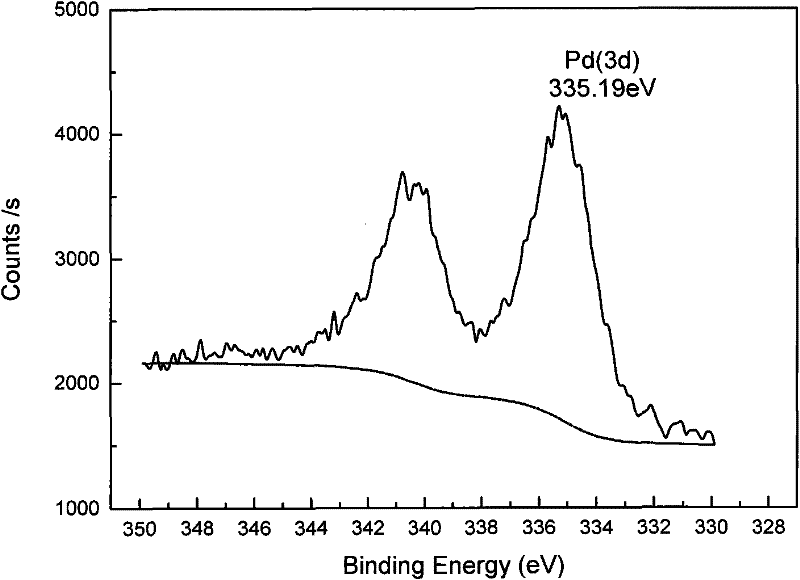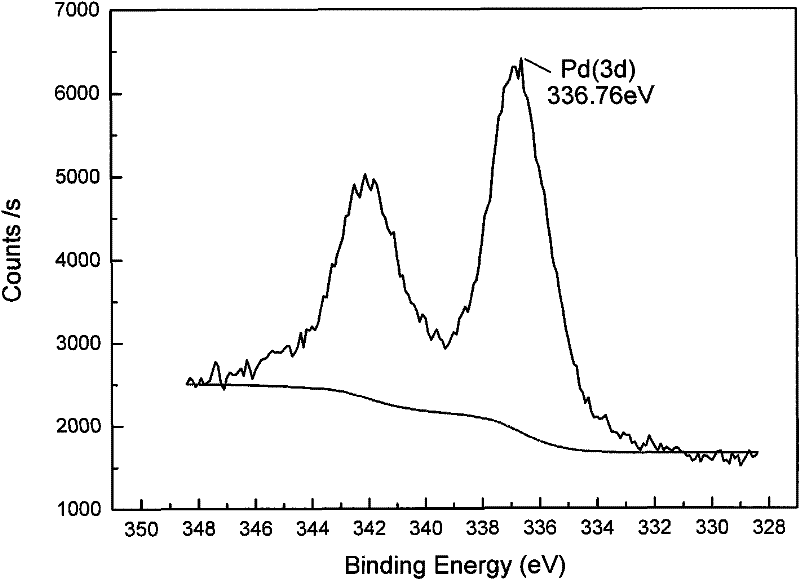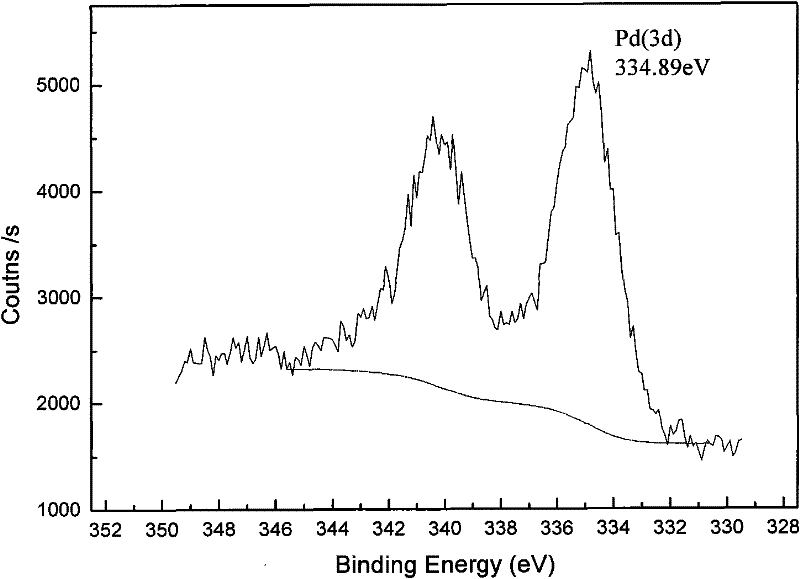Selective hydrogenation catalyst of cracked gasoline and preparation method of selective hydrogenation catalyst
A technology for selective hydrogenation and pyrolysis of gasoline, which can be used in catalyst activation/preparation, selective hydrorefining, chemical instruments and methods, etc. The problem of metal particle pollution in the reaction medium can shorten the preparation cycle, reduce the emission of gas pollutants, and easily control the particle size.
- Summary
- Abstract
- Description
- Claims
- Application Information
AI Technical Summary
Problems solved by technology
Method used
Image
Examples
Embodiment 1
[0046] Using commercially available lanthanum-modified alumina as the carrier (wherein the content of lanthanum in the carrier is 2%), the alumina is calcined at 1000°C, and the specific surface area of the carrier is measured to be 155m 2 / g.
[0047] Preparation of Catalyst A
[0048] Take 2.5ml of PdCl containing 103.3mgPd / ml 2 solution, use deionized water to dilute to 70ml, use sodium carbonate powder to adjust the pH to 4.0, weigh the above-mentioned lanthanum-modified alumina carrier 100g, spray the configured 70ml palladium chloride solution to the alumina carrier, and let it stand for 20 minutes , Take a mixed solution prepared by 20ml deionized water and 20ml isopropanol, pour it into the carrier loaded with Pd, disperse evenly and pour out the excess solution. Use the product under vacuum 60 The Coγ radiation source was irradiated at a dose rate of 30Gy / min for 15h. The irradiated sample was dried at 120° C. for 6 h to obtain catalyst A, wherein the Pd content...
Embodiment 2
[0050] Preparation of Catalyst B
[0051] Take 2.5ml of PdCl containing 103.3mgPd / ml 2 The solution was diluted to 70ml with deionized water, and the pH was adjusted to 4.0 with sodium carbonate powder. Take by weighing 100g of the lanthanum-modified alumina support in Example 1, spray the configured 70ml palladium chloride solution on the alumina support, dry it in an oven at 120°C for 24 hours, weigh the commercially available lead nitrate 800mg, be dissolved in ionized water, make the lead nitrate solution of 70ml, to the aluminum oxide support that contains palladium, spray the configured lead nitrate solution, after standing for 20 minutes, get the mixed solution prepared by 20ml water and 20ml isopropanol, pour Into the carrier loaded with Pd-Pb, after uniform dispersion, pour off the excess solution. Use the product under vacuum 60 The Coγ radiation source was irradiated at a dose rate of 30Gy / min for 15h. The irradiated sample was dried at 120° C. for 6 hours to ob...
Embodiment 3
[0053] Preparation of Catalyst C
[0054] Using the same steps and conditions as in Example 2, except that 640 mg of commercially available stannous chloride was used to replace 800 mg of lead nitrate to prepare catalyst C, wherein the content of Pd was 0.25%, and the content of Sn was 0.40%.
PUM
| Property | Measurement | Unit |
|---|---|---|
| Specific surface area | aaaaa | aaaaa |
Abstract
Description
Claims
Application Information
 Login to View More
Login to View More - R&D
- Intellectual Property
- Life Sciences
- Materials
- Tech Scout
- Unparalleled Data Quality
- Higher Quality Content
- 60% Fewer Hallucinations
Browse by: Latest US Patents, China's latest patents, Technical Efficacy Thesaurus, Application Domain, Technology Topic, Popular Technical Reports.
© 2025 PatSnap. All rights reserved.Legal|Privacy policy|Modern Slavery Act Transparency Statement|Sitemap|About US| Contact US: help@patsnap.com



